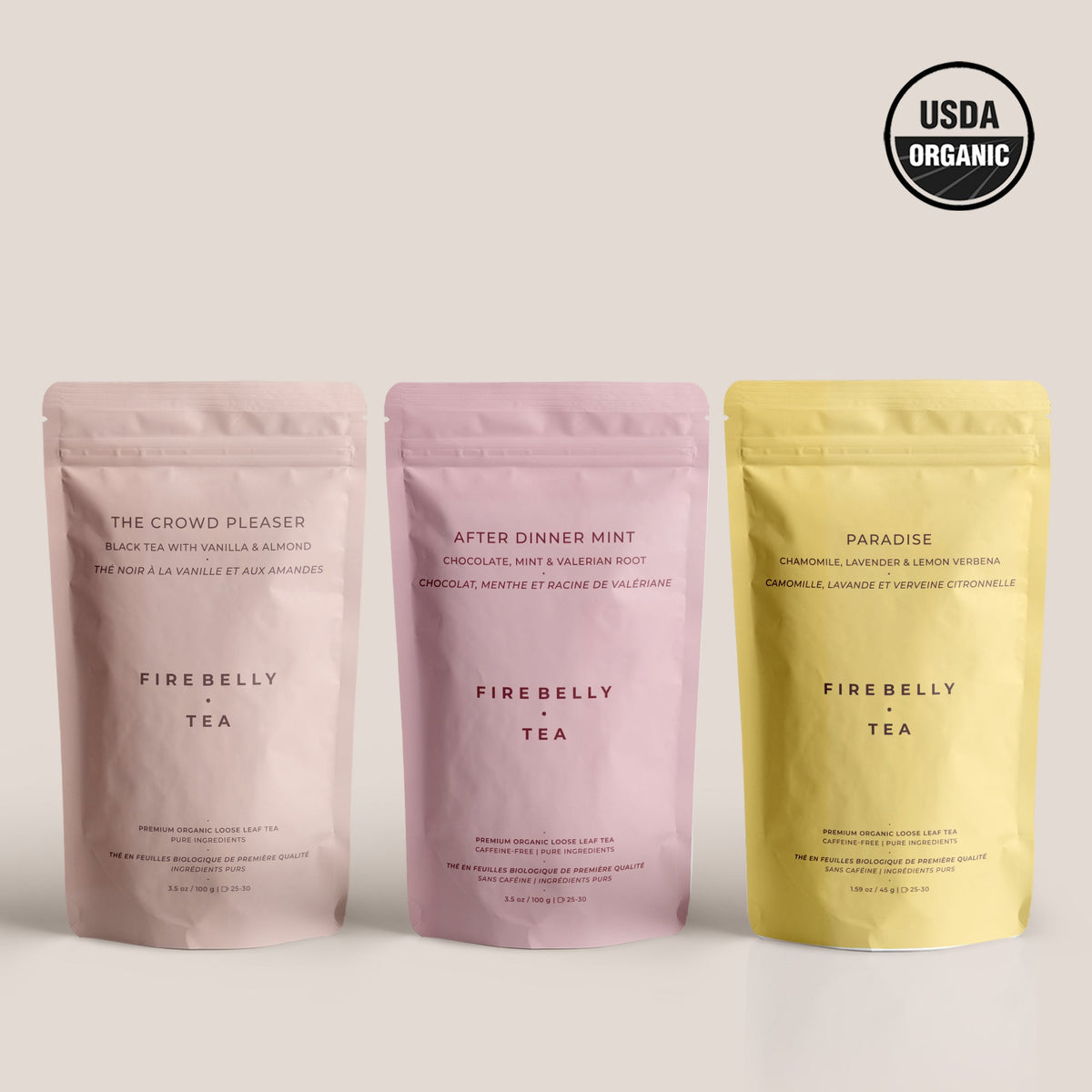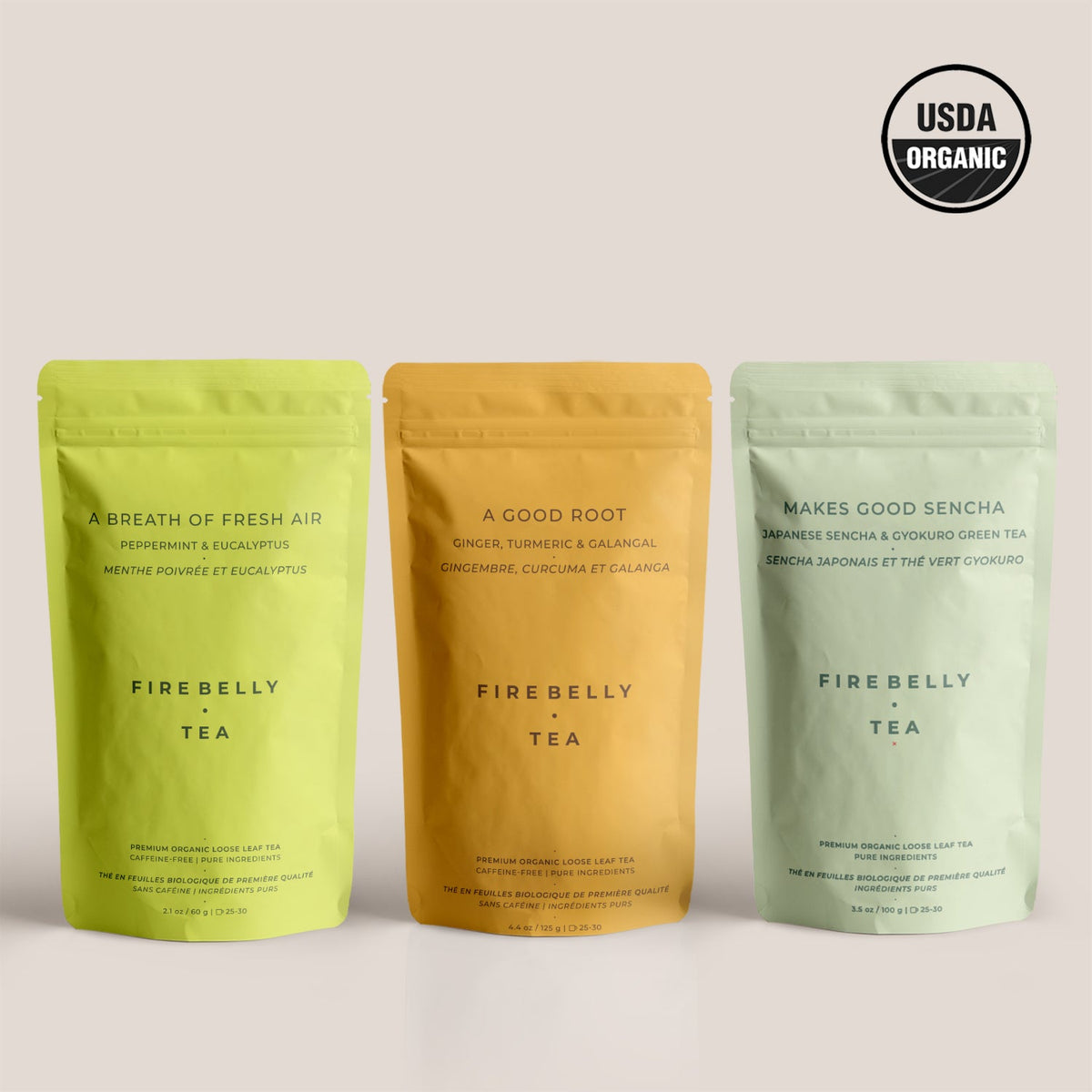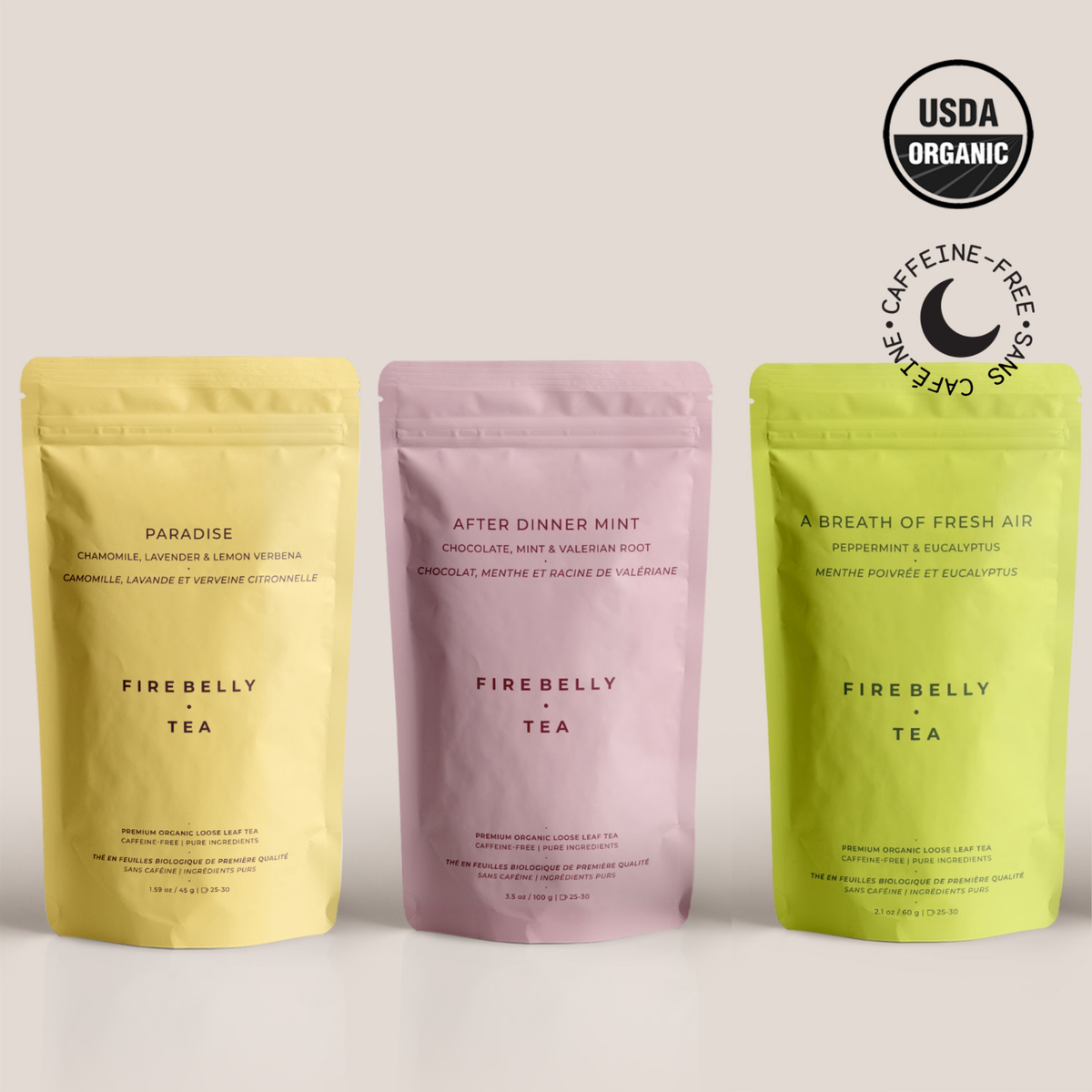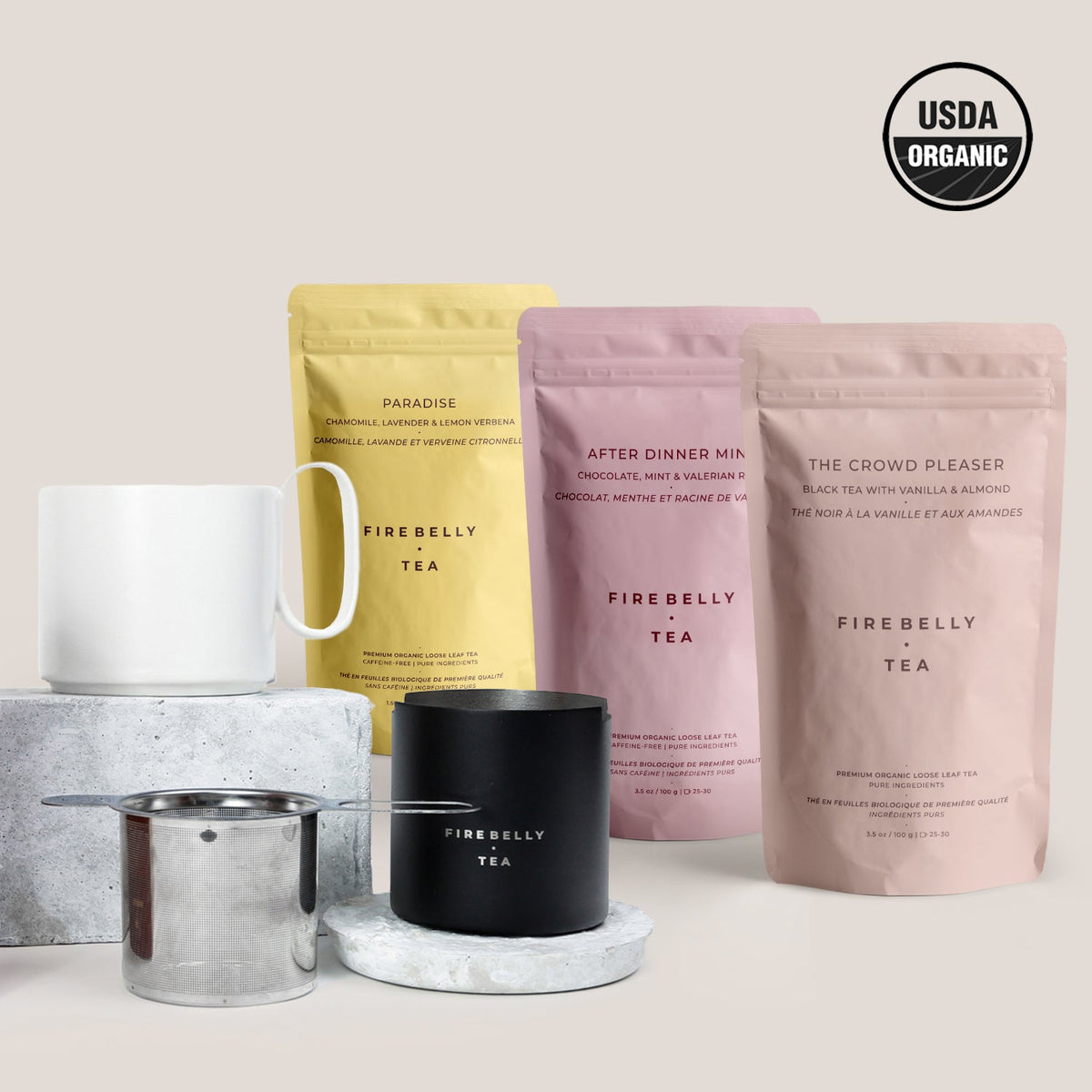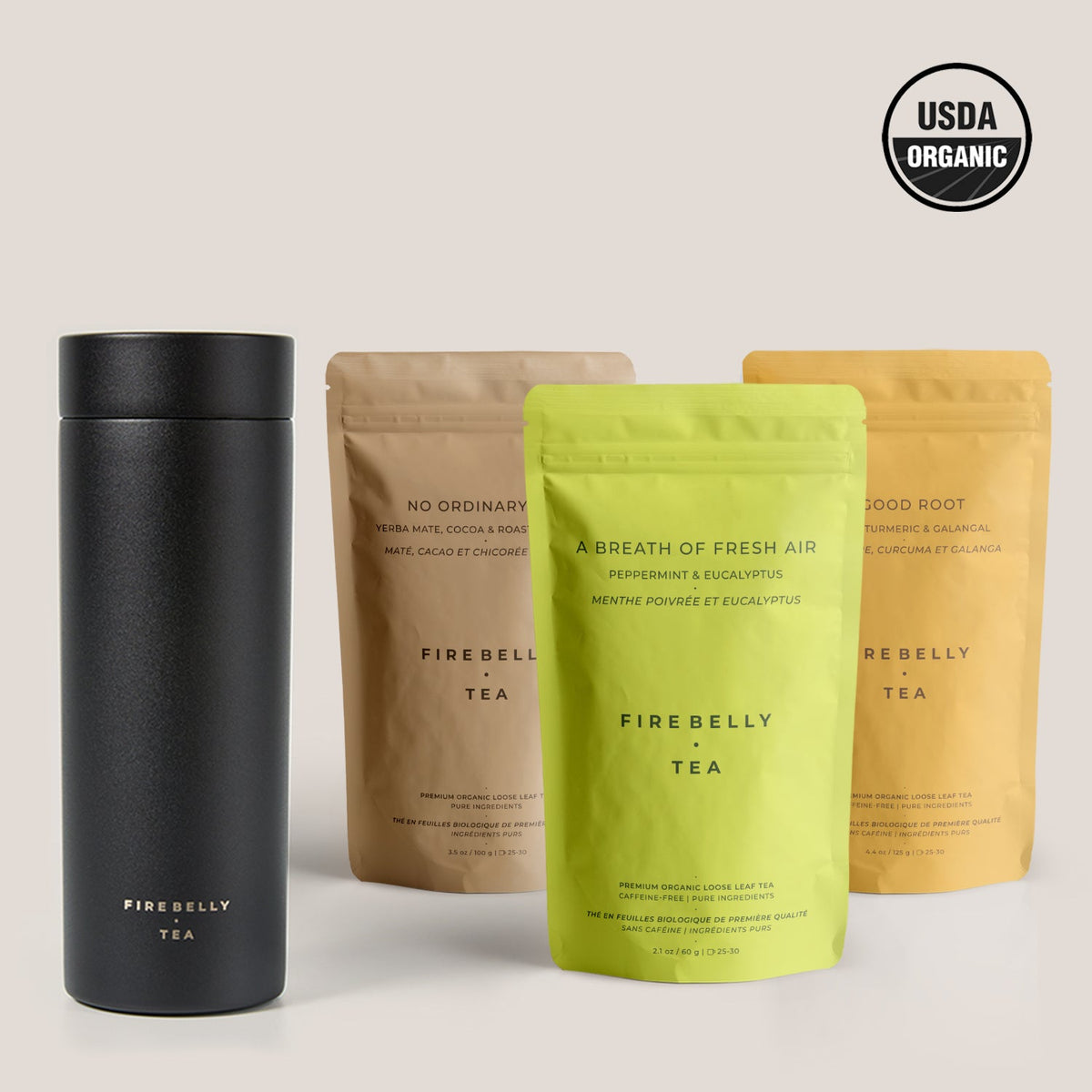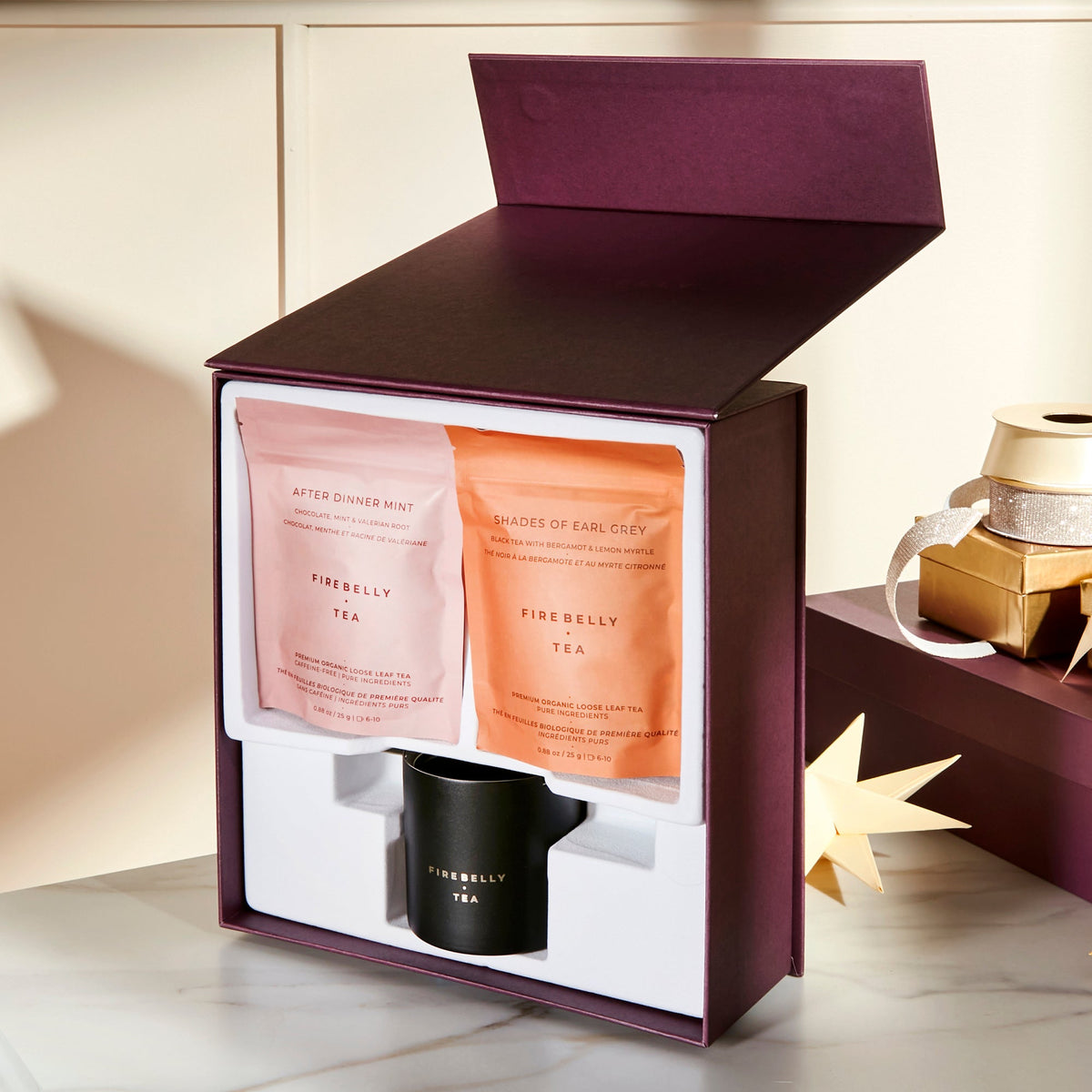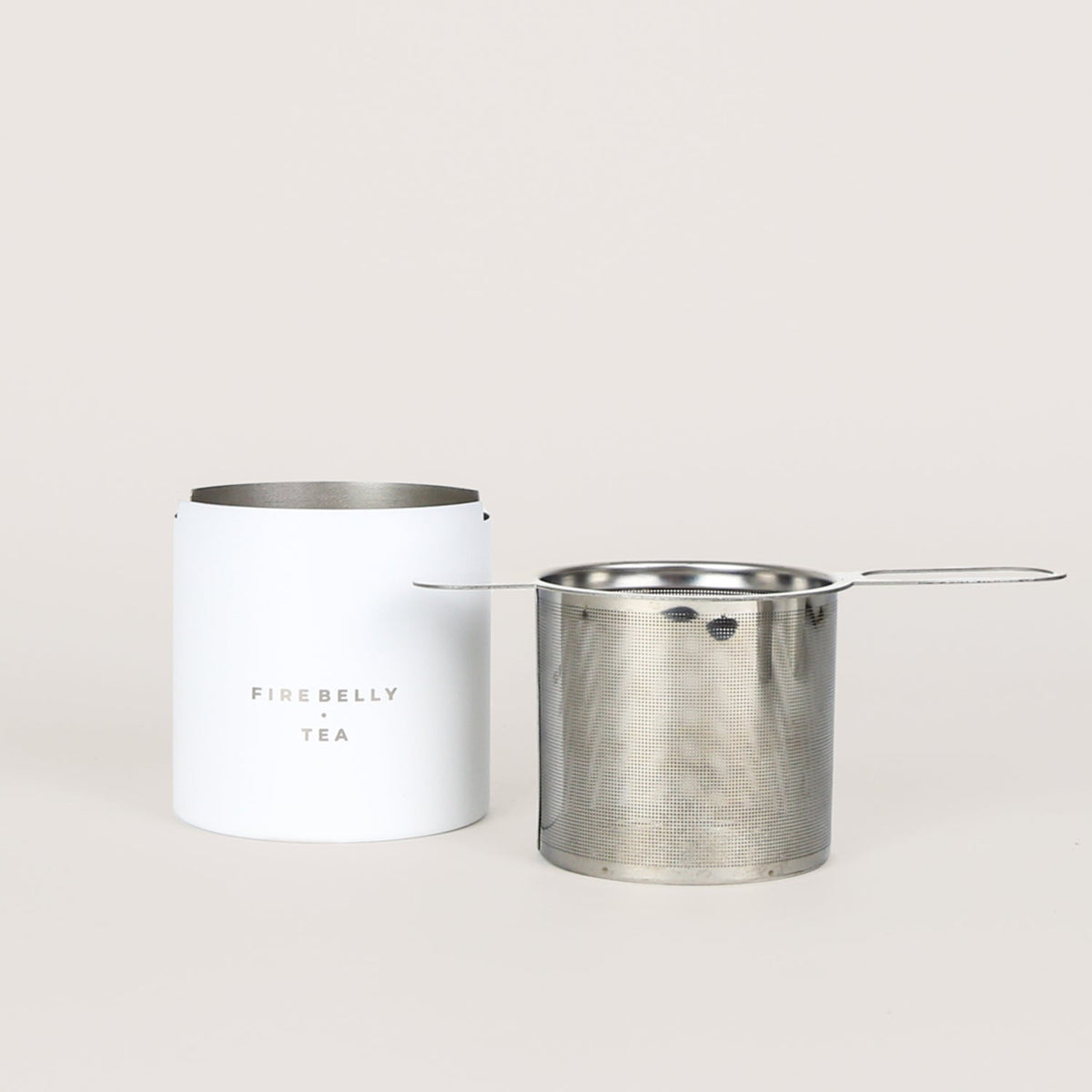There is nothing quite like curling up with a warm cup of tea. Whether you enjoy the robust and bold flavors of black tea, the earthy notes of green tea, the sweet grassy aroma of matcha, or the cooling blast of peppermint, the flavor and aroma of tea take our senses on an incredible journey.
Did you know that the taste of tea depends on how it's processed? Yes, the intricate science of tea processing creates the distinctive taste profiles of various teas. The journey begins when plants' leaves, stems, flowers, seeds, and roots are grown, harvested, processed, and packaged to make your special brew. In this article, we will explore the various popular teas to discover why they taste the way they do and the science behind some of the most popular tea flavors. This comprehensive guide lets you find some new exquisite flavors you have yet to try or reminds you of familiar favorites on your tea-tasting journey.
True Teas, Herbal Teas, And The Tea Plant
You may have heard the term "true tea" and wondered what it meant. Only true teas come from the tea plant (Camellia sinensis). The teas from this plant are black tea, green tea, white tea, matcha tea, and oolong tea. The only difference between these teas, their tastes, and their aromas is the amount of processing they go through.
Black tea has a darker color and a more potent flavor than green tea because the leaves undergo significantly more processing. White tea is lighter than green tea because it goes through less processing and uses parts of the tea plant at a different growth stage. All teas that are harvested from the Camellia sinensis are naturally caffeinated.
The other teas on our list are herbal teas. These teas are not "true teas" because they are made using other plants' leaves, stems, seeds, flowers, and roots. Some notable herbal tea flavors are peppermint, chamomile, lavender, ginger, and turmeric. Pure herbal teas are caffeine-free if you are concerned about your caffeine intake. Let's look closer at these different teas and what gives them their unique flavors.
Black Tea: Bold and Full-Bodied
Black tea is one of the most popular teas for tea lovers worldwide. This tea encompasses a spectrum of tastes that captivate the palate. From the floral flavor of Earl Grey to the malty flavor of Assam to the briskness of Darjeeling, black tea provides some of the most exquisite tastes in the world of tea.
Black Tea Production
The production of black tea is a meticulously orchestrated process that transforms freshly plucked tea leaves into a bold and robust infusion. This tea's flavorful journey begins with the withering of the freshly harvested leaves, allowing them to lose moisture and become supple.
Following withering, the leaves undergo a process called rolling. Whether the leaves are hand-rolled or rolled with a machine, they are twisted and turned to break down the cell walls, initiating enzymatic reactions. This crucial step encourages the release of natural juices and enzymes within the leaves, setting the stage for oxidation.
The tea leaves are then spread out in a controlled environment, typically allowing exposure to oxygen for several hours. This oxidative phase is crucial in developing black tea's distinct flavors and color while retaining all the tea's health benefits.
During the brewing process, the leaves darken, and complex polyphenols, such as theaflavins and thearubigins, form, contributing to the tea's characteristic malty, astringent, or even smoky flavor. This creates a sensory dance that stimulates the taste buds and invigorates the drinker.
Following oxidation, the leaves are fired or dried to halt the enzymatic activity, preserving the flavors and locking in the signature deep hue. The result is a cup of black tea, a testament to the craftsmanship and artistry embedded in each stage of its production.
Studies also revealed that black tea's high levels of antioxidants offer potential benefits like supporting cardiovascular health, improving cognitive function, and boosting overall well-being.
Flavor Profiles of Black Tea
Black teas offer varied flavor profiles. A unique combination of aroma, flavor profile, and strength characterizes each of them. From the malty richness of Yunnan Dian Hong to the brisk and astringent notes of Kenyan black teas, the world of black teas is a captivating exploration of diverse and complex tastes.
Assam, a renowned black tea from India, often boasts a bold and robust flavor with malty undertones influenced by the region's rich soil and climate. Darjeeling, another Indian black tea, is celebrated for its muscatel grape notes, fresh aroma, and lighter, brisker character.
Moving to China, Keemun black tea has a sweet and wine-like flavor, while lapsang souchong stands out with its distinctive smoky essence, attributed to the pine wood-fired drying process.
Ceylon tea from Sri Lanka tends to be bright, brisk, and citrusy, reflecting the island's unique terroir. Earl Grey is a unique blend of black tea leaves flavored with the aromatic essence of bergamot.
Green Tea: Grassy Sweetness
One of the oldest Chinese teas, green tea has a rich history dating back over 4,000 years to ancient China. Since those early days of green tea discovery, the captivating allure of this tea has traveled time and distance to become a beloved choice for tea drinkers worldwide. With earthy and sweet grassy notes, green tea has become a staple among tea enthusiasts and first-time drinkers.
Green tea, rich in antioxidants like catechins, is believed to possess immune-boosting properties, supporting the body's defense mechanisms. Regularly drinking green tea is associated with potential health benefits, contributing to a strengthened immune system and overall well-being.
Whether you like gunpowder tea or green tea combined with fragrant fresh jasmine blossoms, this tea provides a delicious journey for the taste buds.
Green Tea Production
Green tea undergoes a meticulous process that preserves its delicate flavors and vibrant green hue. Like black tea, this type of tea is also derived from the young and tender leaves harvested from the Camellia sinensis plant. The freshly harvested leaves then undergo withering and then drying by air or pan to halt oxidation.
This crucial phase helps retain the natural compounds, particularly catechins, responsible for the green tea brew's slightly bitter and earthy or woody flavor. Next, the leaves are rolled, twisted, or shaped, which breaks down cell walls and enhances the release of flavor compounds during subsequent infusions.
Following rolling, the leaves are subjected to a final drying process, reducing the tea's moisture content to prevent further enzymatic activity. This minimal oxidation process distinguishes the unique characteristics of green tea from its counterparts, resulting in a light and refreshing cup with a nuanced flavor profile, from the grassy notes of Sencha to the nuttiness of Dragon Well, reflecting regional variations and specific processing techniques.
The Making of Magical Matcha
Matcha tea is a vibrant and powdered Japanese green tea that undergoes a meticulous process to achieve its distinct texture and flavor. The tea plants are grown in the shade for several weeks before they are harvested. This process enhances the chlorophyll content and promotes amino acid production.
After plucking, the leaves are steamed to halt fermentation, preserving the vibrant green color. Following steaming, the leaves are air-dried and stone-ground into a fine powder, creating matcha. The entire leaf is ingested when preparing matcha, resulting in a concentrated infusion with a rich, umami-laden taste.
The shading, steaming, and grinding processes contribute to matcha's velvety texture and complex flavor profile, characterized by a harmonious balance of sweetness, bitterness, and the distinctive umami that lingers on the palate. The ceremonial preparation and immersive flavor make matcha a unique and revered tea experience.
Flavor Profiles of Green Tea
Green teas showcase a remarkable range of flavor profiles, each reflecting their respective regions' unique terroir, cultivation methods, and processing techniques. Japanese tea like Sencha and Gyokuro often embody a vibrant, umami-rich flavor with grassy and seaweed-like notes. Matcha, a powdered green tea, presents a concentrated, creamy taste and a perfect balance of sweetness and bitterness. It is essential to pay attention to your steeping time. Too long, and the tea becomes over-bitter. While too short of a steeping time, you may end up with a weak brew.
Chinese tea, like Bi Lua Chun and Dragon Well (Longjing), have distinctly different flavors. Bi Luo Chun boasts a delicate floral aroma, and Dragon Well exhibits a nutty character. Gunpowder green tea is rolled into small pellets and releases a bold and smoky flavor when infused in hot water. Jasmine tea gets its fragrant, floral flavor from delicately infusing the jasmine blossoms into the tea leaves.
Moroccan Mint tea, a popular flavored green tea, is infused with fresh mint leaves, imparting a refreshing and aromatic flavor. From the vegetal freshness of Chun Mee to the toasty notes of Hojicha, the world of green teas is a captivating exploration of diverse and nuanced flavors.
Oolong Tea: Sipping Smoky Flavors
Oolong tea, celebrated for its intricate flavors, undergoes a distinctive and nuanced production process, blending green and black tea production elements. It begins with plucking mature leaves, which are then withered to reduce moisture content.
Following withering, the leaves undergo a crucial bruising step, either by rolling or tossing, initiating partial oxidation. This oxidative phase, responsible for developing the tea's inherent flavors, is carefully monitored and can range from 10% to 70%, depending on the desired outcome.
Here lies the critical distinction—while oolong tea experiences oxidation, it does not fully ferment like black tea. The oxidation process is then arrested through firing or pan-firing, preserving the leaves' intricate flavor.
Flavor Profiles of Oolong Tea
The result is a cup of oolong teas, presenting diverse flavors that can include floral, fruity, creamy, or nutty notes, depending on the specific oolong variety and the degree of oxidation employed during processing. The delicate dance of oxidation in oolong tea production contributes to its remarkable complexity, making it a captivating choice for any seasoned tea enthusiast. It is worth noting that you should avoid using milk. Oolong tastes better as a stand-alone drink.
White Tea: A Delicate Delight
Revered for its delicate and nuanced flavors, white tea undergoes a minimalistic and gentle production process. The journey begins with plucking the youngest leaves and unopened buds from the Camellia sinensis plant, typically during the early spring.
Unlike other types of tea, white tea skips the steps of withering and rolling. Instead, the freshly plucked leaves are merely allowed to wither naturally under the sun or in a controlled indoor environment, preserving their natural moisture content. This limited exposure to oxidation imparts a subtle and delicate flavor to white tea.
The leaves are then carefully dried to halt any remaining enzymatic activity, ensuring the tea retains its light color and nuanced flavor. The resulting infusion, ranging from Silver Needle to Bai Mu Dan, captures the essence of the tea plant in its most unaltered form, providing a serene and pure tea-drinking experience.
Flavor Profiles of White Tea
White teas, known for their delicate and refined nature, offer a spectrum of subtle and nuanced flavor profiles. Silver Needle, one of the most prized white teas, showcases a gentle sweetness with notes of melon and cucumber. White Peony, or Bai Mu Dan tea, is a delicate tea boasting fruity notes and floral undertones.
Shou Mei, another variety, tends to be more robust, with a mellow sweetness and earthy undertones. White Peony and Shou Mei are manufactured from a blend of larger leaves and buds. This combination provides a richer and more complex flavor than the predominantly bud-based Silver Needle.
Pu Erh Tea: A Fermented Favorite
Pu-erh tea is a fermented and aged tea from the Yunnan Province in China. This popular tea is known for its distinctive and intricate production process. The journey begins with plucking large leaves from specific tea tree varieties, often older than those used for other tea types.
After withering and rolling, the leaves undergo a unique microbial fermentation process called "wo dui," in which they are piled, covered, and periodically turned to promote fermentation. This fermentation can last weeks or months, imparting the tea's earthy and robust flavor. Once the desired fermentation level is achieved, the leaves are sun-dried or pan-fired to halt the process.
Flavor Profiles of Pu Erh Tea
Pu-erh can be categorized into raw (sheng) or ripe (shou) based on the degree of fermentation. Raw pu-erh undergoes natural aging over time, developing complex flavors, while ripe pu-erh undergoes an accelerated process, resulting in a darker infusion with a smoother, milder flavor. The aging potential of pu-erh is highly prized, and connoisseurs often value the rich and evolving flavor and all the potential health benefits this delicate tea offers.
Herbal Teas: Nature's Garden of Flavors
-
Peppermint Tea: This tea offers a refreshing and invigorating flavor profile. The distinct coolness of peppermint tea comes from the menthol compounds found in peppermint leaves, providing a cool and minty sensation. Peppermint tea is often associated with potential health benefits, such as relieving digestive discomfort and alleviating headaches.
-
Ginger tea: Spicy and warming, this tea offers a unique flavor experience for tea enthusiasts. The zing in ginger tea comes from gingerol. This is a bioactive compound in ginger that boosts flavor and has anti-inflammatory and antioxidant properties. Beyond its refreshing taste, ginger tea can help soothe nausea, alleviate cold and flu symptoms, and provide several other potential health benefits.
-
Lavender tea: Derived from the fragrant dried flowers of the lavender plant, it presents a sweet, floral, and calming flavor coming from the essential oils present in the lavender buds. Lavender tea has calming effects, making it a popular choice for stress relief and relaxation.
-
Lemon tea: This refreshing tea delights the palate with its refreshing citrus infusion while offering potential health benefits, such as providing a healthy dose of vitamin C and antioxidants to support immune function and overall wellness.
-
Chamomile tea: with a delicate hone and apple-like flavor, this tea is renowned for its calming properties and potential sleep-inducing effects.
-
Hibiscus tea: Vibrant in both color and flavor, the hibiscus plant offers a tart, fruity, and completely unique flavor profile. The infusion of dried hibiscus petals results in a crimson hue and a zesty flavor reminiscent of cranberries. Beyond its delightful taste, hibiscus tea is associated with potential cardiovascular benefits and antioxidant properties.
-
Rosehips tea: This tea is a flavorful and aromatic herbal infusion made from the dried fruits of the rose plant. Renowned for its bright and slightly tangy taste, rosehip tea is cherished for its natural sweetness and hints of floral undertones. The tea is caffeine-free and is often enjoyed for its potential health benefits, including a rich vitamin C and antioxidant source.
Tea Taste and Personal Preference
When it comes to tea and flavor, it boils down to personal preference. With some hot water, tea leaves, dried fruit or flowers, seeds, and spices, you can create an aromatic tea journey beverage that pleases the senses, offers impressive health benefits, and becomes one of your favorite drinks to enjoy all year. If you're looking for some unique tea flavors to try, look at these delicious brews.
